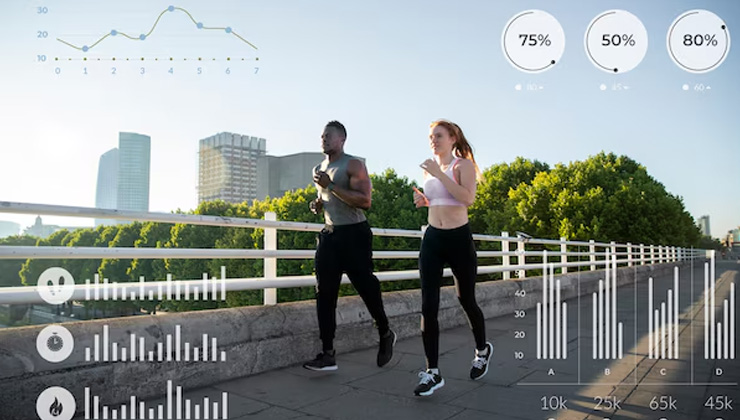
In the high-stakes world of competitive sports, even the smallest edge can make the difference between victory and defeat. Enter data analytics-a powerful tool that is transforming how athletes train, how teams strategize, and how sports are played. From wearable tech tracking every movement to algorithms predicting peak performance, data analytics has become a game-changer in modern sports, unlocking insights that were once invisible.
One of the most significant impacts of data analytics is in the training room. Gone are the days when athletes simply relied on intuition or experience to improve. Today, wearable devices track everything from heart rate to muscle strain, providing real-time feedback on an athlete's performance. Data from these devices is then analyzed to pinpoint areas for improvement, helping athletes train smarter, not just harder.
For example, analytics can reveal an athlete's ideal intensity level for specific workouts, ensuring that they're training at the optimal load to maximize gains without risking injury. Data can also uncover patterns in fatigue and recovery, allowing coaches to design training regimens that balance performance gains with the necessary rest. This level of insight means that athletes can now fine-tune their training to a degree that was previously impossible.

Data analytics has also revolutionized how teams approach game strategy. In many sports, teams now use complex algorithms to analyze their opponents' tendencies, studying countless hours of game footage and stats to identify weaknesses and exploit them. Coaches and analysts can break down patterns in an opponent's play style, giving their team a tactical advantage. Whether it's understanding a soccer team's preferred passing lanes or a basketball player's shooting hotspots, data analytics helps teams prepare with precision.
But the strategic benefits don't stop with analyzing opponents; teams also use data to refine their own play. In baseball, for instance, teams use data to adjust defensive positioning, placing fielders in spots where an opposing hitter is most likely to aim. In basketball, data analytics helps coaches design plays that maximize their players' strengths, putting them in the best possible positions to score. These small adjustments, driven by data, can have a massive impact on the outcome of a game.
Injuries are an inevitable part of sports, but data analytics is helping teams minimize their impact. By monitoring biometric data and movement patterns, analysts can detect early signs of fatigue or strain that could lead to injury. For example, if a player's running gait begins to shift, this might indicate an increased risk of a hamstring injury. Coaches and medical staff can then intervene early, adjusting the athlete's training load or recovery routine to prevent the injury from worsening.
Data is also used in recovery, helping athletes bounce back faster and safer. By tracking metrics like muscle activation and range of motion, analysts can customize rehab programs for each athlete, ensuring a faster return to peak condition. In sports where careers can be cut short by injuries, this level of preventive care is invaluable, extending the playing lives of athletes and keeping teams at full strength.

Analytics has also changed the way teams scout and develop talent. In the past, recruiting relied heavily on subjective assessments by scouts and coaches. Today, teams can evaluate players based on comprehensive data sets that provide objective insights into performance, potential, and fit within a specific system.
For instance, data can reveal a soccer player's efficiency in passing, their stamina across 90 minutes, or their effectiveness in different formations. This data-driven approach helps teams identify undervalued players with potential or find the perfect fit for a missing role. It also plays a role in player development, with coaches using data to track young athletes' progress and tailor training to accelerate their growth.
Data analytics isn't just for athletes and coaches-it's also enhancing the experience for fans. In broadcasts, viewers now see real-time stats, player speeds, and even predictive analytics that suggest the likelihood of a particular play succeeding. This data-rich experience gives fans a deeper understanding of the game, allowing them to appreciate the finer details of strategy and skill.
Some teams and leagues are even using data analytics to create interactive experiences, where fans can dive into stats and make predictions based on real-time data. For sports enthusiasts, data has added a new layer of excitement, transforming the way people watch, analyze, and enjoy their favorite games.

As data analytics continues to evolve, it's poised to reshape sports even further. Machine learning and artificial intelligence will likely play bigger roles, enabling teams to identify patterns that are invisible to the human eye. With more sophisticated tracking devices, data will become even more precise, capturing subtleties in movement, energy expenditure, and biomechanics.
In the end, data analytics is giving athletes and teams a new toolkit for excellence. By combining raw talent with data-driven insights, sports are reaching new levels of performance and strategy. The future of sports isn't just about natural ability or hard work-it's about leveraging the power of information to make smarter decisions, giving athletes every possible advantage as they push the boundaries of human achievement.
Consumers Guide membership grants you early bird access to the latest tech gadgets on the market, as well as huge discounts that aren't available to anyone else. Sign up below to receive all the latest deals on tech gadgets that are ideal as gifts for any occasion, before they're available to the mass market. Membership of Consumers Guide is completely free - no strings attached! Once you sign up, you will occasionally receive newsletters sent to your inbox with all the latest and greatest gadget discounts and deals - you also can unsubscribe at any time. To join for free, simply enter your e-mail below and click "Subscribe":